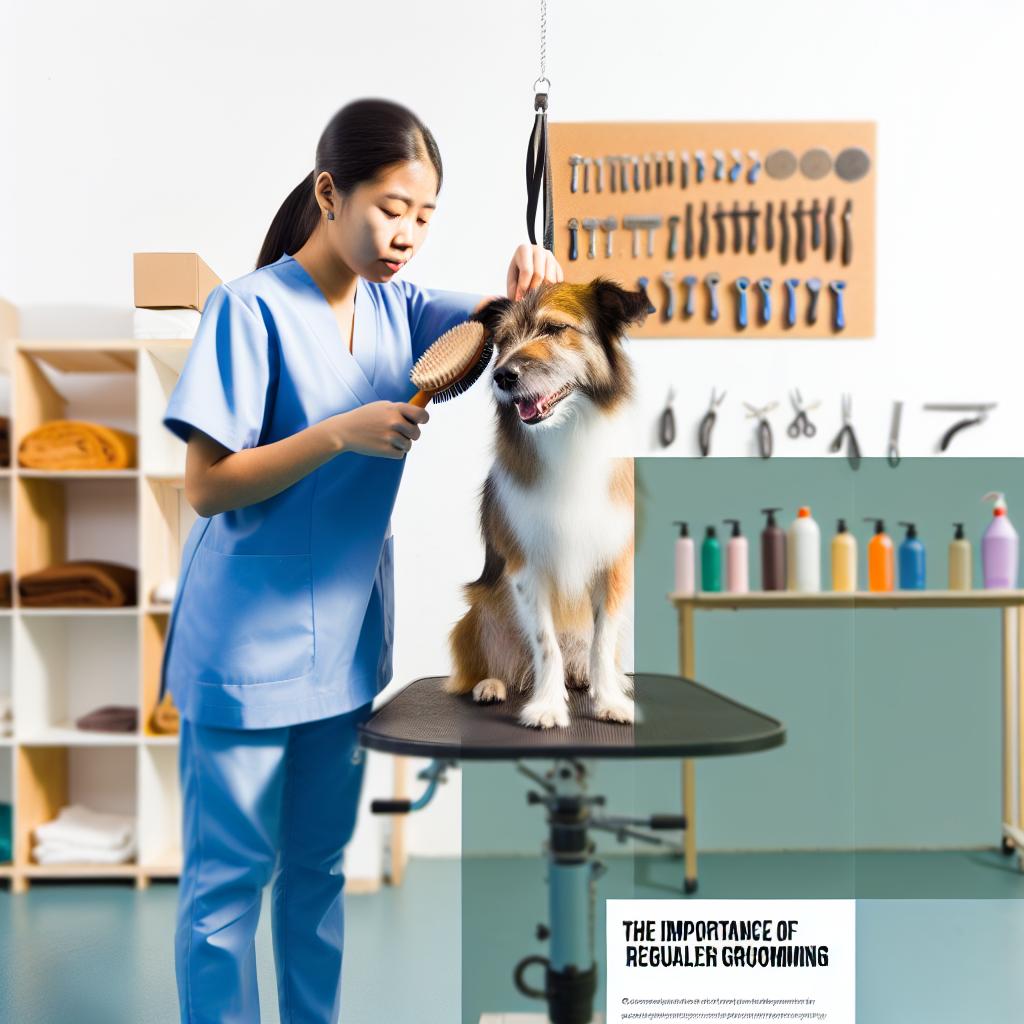
Grooming your dog should be seen as a vital part of pet care, akin to regular vet visits or a balanced diet. It serves as a preventive measure for various health issues and contributes to a higher quality of life for your canine friend. To better understand the importance of grooming, let’s delve into its several benefits and why you should make it a habitual practice.
One of the primary advantages of regular grooming is the maintenance of your dog’s skin and coat. Routine brushing and washing remove dirt, debris, and loose hair. This helps to prevent the formation of mats and tangles, which can lead to skin irritation or infections. A well-groomed coat also allows for the even distribution of your dog’s natural oils, which are essential for maintaining a shiny, healthy coat.
Regular grooming sessions, particularly brushing, aid in stimulating your dog’s skin, which in turn promotes better blood circulation. Enhanced blood flow can improve your dog’s overall health by aiding nutrient and oxygen delivery throughout their body. This leads to healthier skin and a more vigorous, shiny coat.
For breeds that shed seasonally or chronically, regular grooming helps keep shedding under control. By routinely removing loose fur, you can prevent excessive shedding and minimize the amount of hair your dog leaves around the house. This also reduces the risk of inhaling allergens or developing respiratory issues.
While grooming, you can observe your dog’s body closely and become familiar with what’s normal for them. This makes it easier to notice any changes such as lumps, bumps, or cuts. Early identification of irregularities can make a huge difference in the effectiveness of treatment and your dog’s recovery if medical attention is required.
Regularly handling your dog during grooming allows you to notice any changes in weight or body condition. Sudden weight gain or loss could signify underlying health concerns that require a vet’s attention. Keeping an eye on body condition during grooming ensures early intervention and management of any potential issues.
Grooming is a critical component of parasite management. Fleas, ticks, and other parasites can cause significant health issues for your dog, ranging from mild irritation to severe diseases. By inspecting your dog’s coat and skin closely, any signs of parasites can be detected early. Taking immediate action to remove and prevent parasites can save your dog discomfort and prevent more serious health complications.
Using grooming sessions to apply preventative treatments, such as anti-flea and tick products, ensures that your dog is consistently protected against parasites. These treatments are most effective when used regularly and according to the product’s guidelines.
Including ear and dental care in your regular grooming routine can significantly impact your dog’s overall health. Dogs’ ears are prone to infections, especially if they have long or floppy ears, as these can trap moisture and create a breeding ground for bacteria.
During grooming, take the time to inspect your dog’s ears for signs of redness, odor, or discharge, and clean them gently to prevent infections. Sometimes dogs may shake their heads or scratch their ears more often if there’s an issue, so be vigilant about any behavioral changes.
Neglecting dental hygiene can lead to tartar buildup, bad breath, and even serious periodontal diseases. Brushing your dog’s teeth regularly with dog-specific toothpaste mitigates these risks, helping to maintain strong, healthy teeth. This also contributes to your dog’s overall health as poor dental hygiene can lead to other health issues.
Nail trimming is another vital component of a comprehensive grooming routine. Overgrown nails can lead to a range of problems, from discomfort while walking to more serious issues such as torn or cracked nails, which can be painful and become infected.
Regular trimming keeps nails at a manageable length, reducing the risk of snagging and breaking. This also helps maintain proper leg alignment and balance, which is especially important for active dogs or those that participate in physical activities.
Grooming should not only be viewed as a necessity but an opportunity for connection and relaxation for both you and your dog. When introduced correctly, grooming can be a calming and enjoyable experience, decreasing overall stress levels in your pet.
Spending time grooming your dog strengthens the bond between you. Dogs thrive on routine and positive interactions, so making grooming a part of your regular schedule allows your pet to anticipate and enjoy this time with you. This mutual activity fosters trust and reinforces your relationship.
Regular grooming sessions also provide a great chance for training and reinforcing good behavior. By using positive reinforcement, such as treats and praise, you can teach your dog to stand still and remain calm during grooming, which makes the process smoother and more enjoyable for both parties.
In conclusion, regular grooming is essential for maintaining your dog’s health, well-being, and happiness. It encompasses a range of practices from coat care to health monitoring, each of which plays a critical role in preventing health issues and optimizing your dog’s quality of life. More than just a superficial practice, grooming is a proactive approach to pet care that promotes not only physical health but also emotional well-being. To ensure proper grooming techniques or specific care based on your dog’s breed, consider consulting additional resources. Remember, your dog’s health and comfort are closely linked, and grooming is a step towards ensuring both.